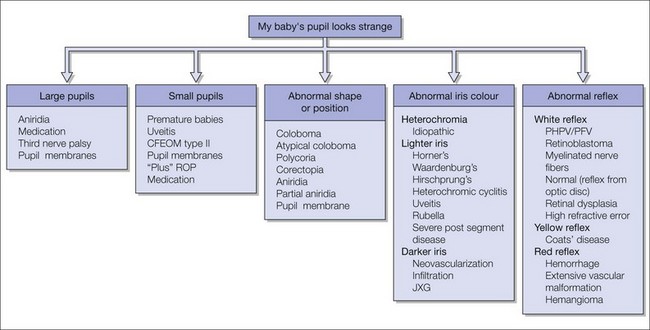Chapter 111 My child’s pupils look odd!
Any vagueness of a pupillary description by referring doctors, nurses, or parents should not be dismissed or criticized because it is rarely a finding without foundation. A full eye examination usually reveals the cause and often a portable slit-lamp can be helpful (Fig. 111.1). After careful examination, the pupils should be dilated and fundoscopy performed because associated retinal problems are not infrequent.
The size of the pupils is smallest during infancy, which adds to the difficulty for pediatricians in their assessments, particularly in infants with dark irides. An increase in size begins to occur sometime during the first 6 months of age.1 It is not until adolescence that the pupils attain their fullest size (see Chapter 6).
Some patients have an intermittent abnormality in the pupil size. Alternating anisocoria has been described.2 It is not unusual for the pupil abnormality to be absent on the day of examination and hence it is very important to listen carefully to the history given by parents and to encourage them to describe what they have seen.
Stay updated, free articles. Join our Telegram channel

Full access? Get Clinical Tree



